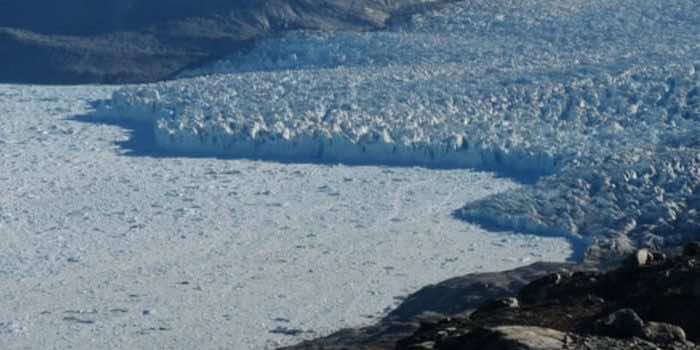Recent data states that another pandemic might occur due to melting ice in glaciers.
Genetic analysis of soil and lake sediments from Lake Hazen have indicated a potential virus.
With climate change on the rise, viruses and bacteria frozen in glaciers could come back to life and infect local wildlife.
For reference, in 2016, an anthrax outbreak in northern Siberia killed a child and infected at least seven other people. It was later discovered that the melted permafrost had exposed an infected reindeer carcass.

Dr. Stéphane Aris-Brosou and his colleagues at the University of Ottawa in Canada gathered soil and sediment samples from Lake Hazen.
Then, they sequenced RNA and DNA in these samples to identify signatures matching known viruses, as well as potential animal, plant, or fungal hosts.
The research, published in Proceedings of the Royal Society B, stated that the risk of viruses attacking new hosts was higher at locations close to the points where glacial water came in.
The team did not quantify how many of the viruses they identified were previously unknown – something they plan to do in the coming months – nor did they assess whether these viruses could lead to an infection.
In 2014, scientists at France’s National Centre for Scientific Research in Aix-Marseille revived a huge virus from Siberian permafrost, making it infectious again for the first time in 30,000 years. The study’s author, Jean-Michel Claverie, told the BBC that exposing such ice layers could be “a recipe for disaster”.
Aris-Brosou’s team also stated that “As long as viruses and their ‘bridge vectors’ are not simultaneously present in the environment, the likelihood of dramatic events probably remains low,” they wrote.
“The only take-home that we can confidently put forward is that as temperatures are rising, the risk of spillover in this particular environment is increasing,” said Aris-Brosou. “Will this lead to pandemics? We absolutely don’t know.”

“For all we know, it could be the same as the likelihood of host switching posed by viruses from the mud in your local pond,” said Arwyn Edwards, the director of the Interdisciplinary Centre for Environmental Microbiology at Aberystwyth University.
However, “we do urgently need to explore the microbial worlds all over our planet to understand these risks in context,” he said. “Two things are very clear now. Firstly, the Arctic is warming rapidly and the major risk to humanity is its influence on our climate. Secondly, that diseases from elsewhere are finding their way into the vulnerable communities and ecosystems of the Arctic.”


